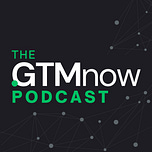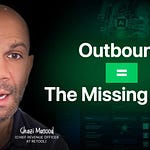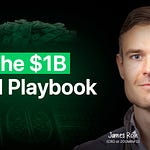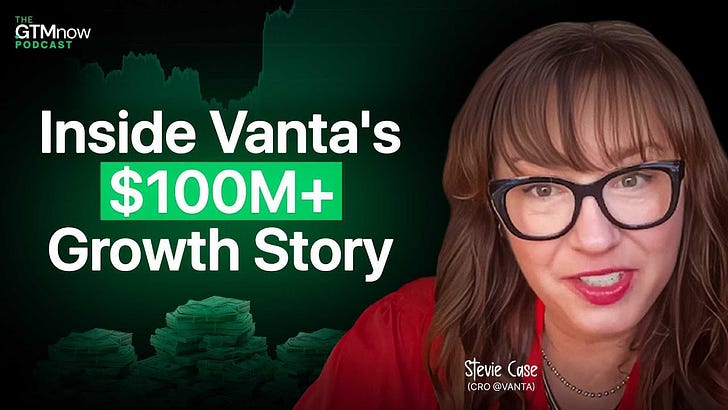🎙️ The GTMnow Podcast tells the stories of how the top 1% of operators, founders and investors build, scale and invest.
GTMnow is the media brand of VC firm, GTMfund.
Brought to you by: Harmonic
Harmonic helps you discover the best startups way ahead of the competition. We use it at GTMfund, as do thousands of investors at firms like USV and Insight. GTM teams at companies like Notion and Brex also rely on the platform to stay ahead.
Harmonic tracks millions of startups and lets you search using simple filters or natural language to match exactly what you’re looking for. When you find a company that looks interesting, Harmonic pulls everything into one place (founder backgrounds, traction, and market data) so you can quickly evaluate and understand if it’s a fit.
At GTMfund, we even have a private Slack channel called #companywatchlist powered entirely by Harmonic.
Get 2 dedicated sessions with their team to help you test and structure the perfect searches here.
Who we sat down with
Paul Williamson is a seasoned go-to-market leader and advisor best known for helping Plaid scale from $3M to $300M ARR. As Head of Revenue, he built and evolved Plaid’s go-to-market roadmap across product-market fit, upmarket expansion, and new verticals. With deep experience aligning GTM with product, he now advises founders on sequencing bets, building forward-compatible roadmaps, and scaling revenue organizations with intention.
Discussed and what you’ll learn
Why GTM roadmaps should be “forward-compatible”
Iteration cycles in GTM vs. product roadmaps
Early lessons from Plaid’s rudimentary qualification process
Recognizing high-value clients vs. anti-patterns in inbound leads
How daily standups created fast GTM learning loops
Shifting from PLG to sales-led motions with SDRs and routing
Sequencing GTM expansion: fintech → enterprise FSIs → embedded fintech
Compensation design mistakes and their impact on sales behavior
Episode highlights
00:00 — Why GTM roadmaps should be built “forward-compatible”
01:53 — How Plaid iterated through 9–10 GTM versions in the first year
05:12 — Plaid’s early qualification process: 4 simple questions
07:28 — Why most inbound leads weren’t equal—and how Plaid spotted patterns
10:01 — Using daily standups twice a day to refine GTM qualification
14:32 — How Plaid’s GTM roadmap evolved from monthly to yearly cycles
20:46 — Moving beyond partnerships to diversify top-of-funnel channels
24:53 — Scaling into enterprise financial institutions with tailored product needs
27:09 — Entering phase three: embedded fintech with customers like Tesla
30:00 — Compensation design mistakes that slowed deals and created risk
Key takeaways
Build GTM like product. Plaid treated go-to-market as an iterative roadmap, evolving from v0.1 scrappiness to multi-year strategic planning.
Forward-compatible beats backward-compatible. Each GTM version should enhance and extend the last, not require rework.
Not all inbound is equal. High lead volume is a false signal unless paired with value-based qualification and pattern recognition.
Anti-patterns matter. Plaid avoided over-investing in low-value ACH add-ons, instead routing them through PLG and focusing on high-value accounts.
Rituals accelerate learning. Twice-daily standups created rapid GTM feedback loops in the early days.
Overbuilding is risky. GTM leaders should feel slightly behind the company’s needs—not over-engineered ahead of them.
Comp plans shape behavior. Plaid learned that SMB-style comp delayed enterprise deals and unintentionally increased competitive risk.
GTM expansion must align with product readiness. Scaling into enterprise required product investments in SLAs, uptime, and access controls.
Embedded fintech unlocked phase three. Plaid moved from serving fintechs to powering financial features in industries like auto and telecom.
Documenting roadmaps creates clarity. Writing down GTM plans helped Plaid focus and communicate priorities with technical founders.
Follow Paul Williamson
Recommended books:
Atomic Habits by James Clear — Helped Paul think about building repeatable, compounding habits in GTM and leadership.
Scaling Through Chaos by Index Ventures — A practical guide for founders (and GTM leaders) on navigating early-stage challenges; Paul contributed to it.
Referenced resources and mentions:
Harmonic: https://harmonic.ai
Stripe: https://stripe.com
Dwolla: https://www.dwolla.com
Venmo: https://venmo.com
Robinhood: https://robinhood.com
Acorns: https://www.acorns.com
Tesla: https://www.tesla.com
Host links
X (Twitter): https://x.com/sophiebuona
Follow GTMnow
Website: https://gtmnow.com
LinkedIn: https://www.linkedin.com/company/gtmnow
X (Twitter): https://x.com/GTMnow_
YouTube: https://www.youtube.com/@GTM_now
Podcast Directory: https://gtmnow.com/tag/podcast
Follow GTMfund
Newsletter: You’re in it :) If this was forwarded to you, you can subscribe here. GTMnow is our main brand for content, but we also have two around our investments:
The GTMnow Podcast - subscribe to support
It would mean the world to us if you subscribe to the show on your platform of choice. This helps support our growth, which in turn helps us continuously bring on bigger guests and deliver the content that you want to hear most.
The GTMnow Podcast tells the stories of how the top 1% of operators, founders and investors build, scale and invest.
Each week, we uncover the pivotal moments, bold decisions, and go-to-market strategies that turn ideas into breakout companies.
GTMnow is the media brand of GTMfund - we are an early-stage venture fund made up of 350+ go-to-market executives from the fastest-growing companies.
Visit gtmnow.com for more episodes, The GTMnow Newsletter editions, and other content.














